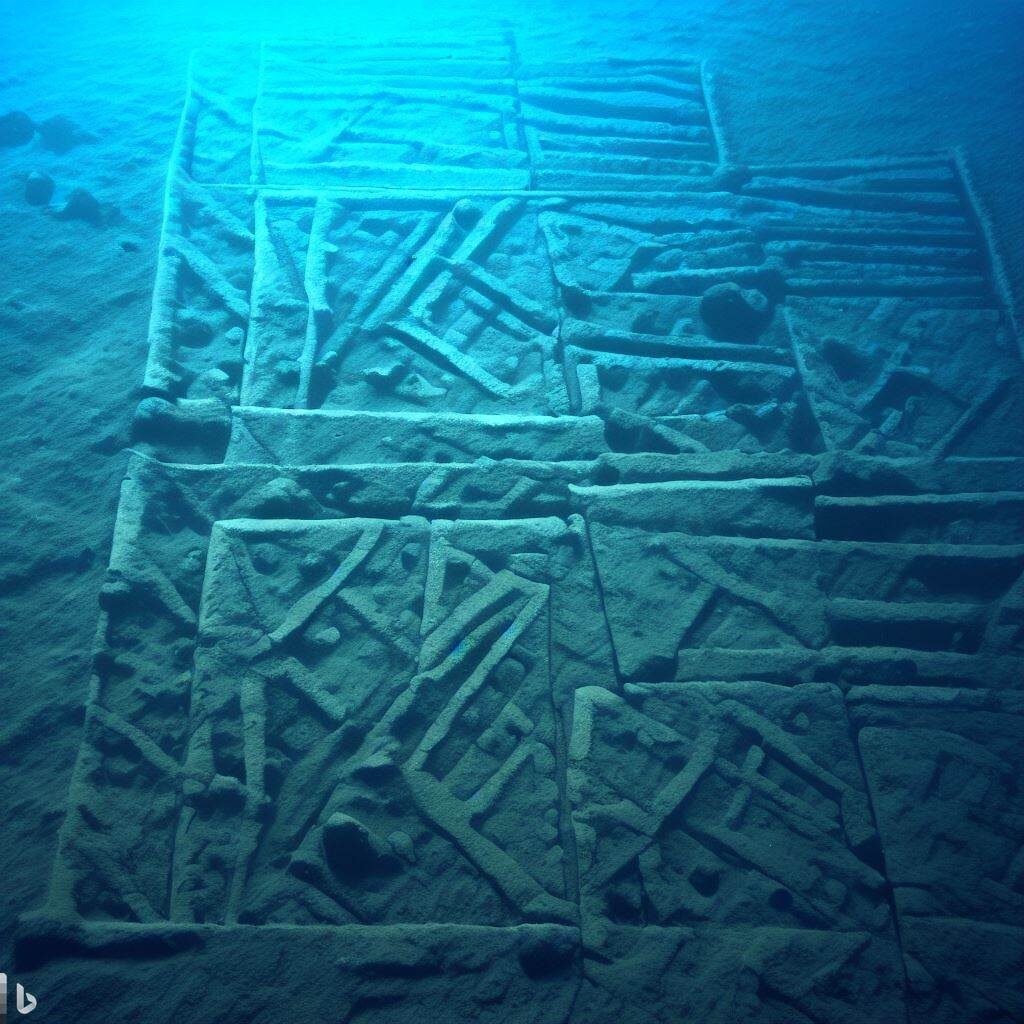Title: Discovery of Submerged Geometric Structures on the Birsa Bank Seamount: Potential for Understanding Mediterranean Civilization History

Discovery of Submerged Geometric Structures on the Birsa Bank Seamount: Potential for Understanding Mediterranean Civilization History
Abstract: The discovery of submerged geometric structures on the Birsa Bank seamount in the Mediterranean Sea presents an important potential discovery for understanding the history and prehistory of the Mediterranean and the civilizations that inhabited it. The discovery was made by Dr. Luigi Usai, who searched the depths of the Mediterranean Sea, particularly the Strait of Sicily, using various bathymetric analysis software. The structures appear to be ancient buildings built on a submerged hill/mountain, indicating the possibility of expanding current knowledge of at least one ancient civilization. However, further research and analysis are needed to confirm the veracity of the structures and identify the civilization that may have created them. It is also important to ensure that future research and recovery activities are carried out with respect for the marine environment and its ecosystems.
Keywords: Birsa Bank, Mediterranean Sea, underwater archaeology, submerged structures, ancient civilizations, bathymetry software
Introduction:
The study of underwater archaeology is crucial to understanding the history of ancient civilizations and their relationship with the environment. The Mediterranean Sea has been a key area of interest due to its strategic location and importance throughout history. Recent potential discoveries of submerged geometric structures on the Birsa Bank seamount by Dr. Luigi Usai provide an opportunity for new archaeological and scientific research and discoveries.
Methods:
Dr. Luigi Usai examined the depths of the Mediterranean Sea in as much detail as possible, focusing on the Strait of Sicily. He utilized various free and available bathymetric analysis software, including the Emodnet geoviewer and the Gebco software, to identify and analyze the submerged structures. The software showed the presence of regular structures of an apparently anthropic nature that seem to be very ancient buildings built starting from a currently submerged hill/mountain.
Results:
The analysis of the geometric shapes revealed that they are perimeter walls of submerged underwater structures, whose origin and dating remain undetermined at the moment. The structures are visible through bathymetry software or with the help of the Emodnet geoviewer. The structures have many 90° angles, suggesting they were made by human beings and therefore not a random phenomenon. These facts could in part recall what Plato affirmed in Timaeus and Critias and what was affirmed in the texts of the Temple of Edfu in Egypt.
Discussion:
If the veracity of the discovered structures is confirmed, it means that new, hitherto unknown information about the past of the human race can be obtained by conducting underwater searches in Birsa Bank. This implies the possibility of expanding current knowledge of the past of at least one ancient civilization. Furthermore, this stretch of sea, at the present time, for most scholars was land around 18,000 years ago. If the submersion was immediate, it is possible that many submerged artifacts can be found that could clarify a lot about these remote eras. Questions such as how people lived, how the dead were buried, and whether there was actually a cult of the dead, as well as if there were forms of writing that were then lost forever and forgotten and if particular tools were used, could be answered. The role this civilization had compared to those already known to the scientific community could also be determined.
Conclusions:
Further research and in-depth analysis are needed to confirm the veracity of the discovered structures and to identify the civilization that may have created them. It may also be necessary to use underwater excavation techniques to recover any artifacts and human remains. It is important to take into consideration the environmental and conservation aspects related to the discovery of these submerged structures and to ensure that future research and recovery activities are carried out with respect for the marine environment and its ecosystems.
Moving on to the potential implications of this discovery, the identification of an unknown civilization in the Mediterranean Sea would have significant historical and archaeological implications. It could potentially challenge current theories on the development of ancient civilizations and the evolution of human society. Furthermore, the potential discovery of artifacts and human remains could provide valuable insights into the daily life, religious practices, and cultural traditions of this civilization.
However, it is important to approach this potential discovery with caution and to prioritize the conservation of the marine environment and its ecosystems. Any recovery activities should be carried out in accordance with established scientific and ethical guidelines to minimize any negative impact on the marine environment.
In conclusion, the discovery of the geometric structures on the seamount of Birsa Bank represents an exciting opportunity for further scientific research and discoveries in the field of marine archaeology. It is essential that any future research and recovery activities are conducted with the utmost care and respect for the marine environment and its ecosystems, and that all scientific and ethical guidelines are followed.



